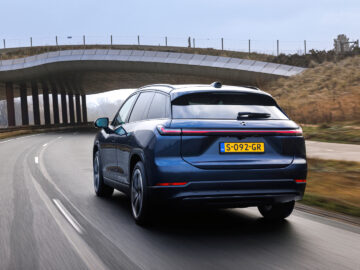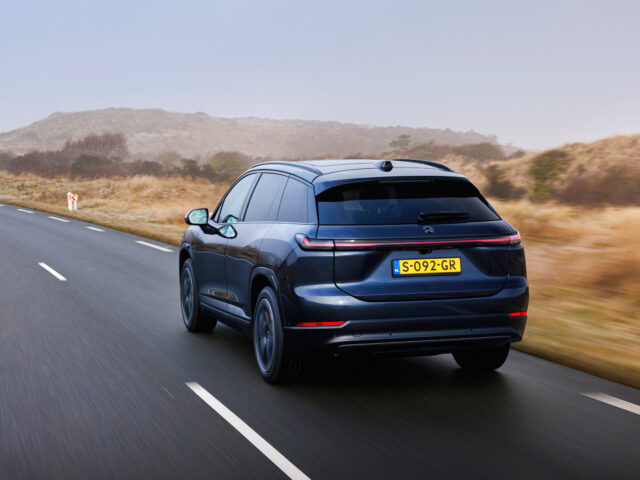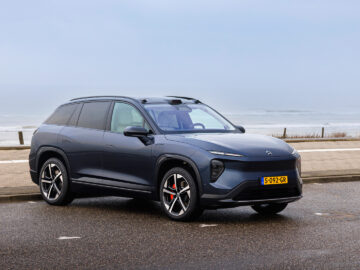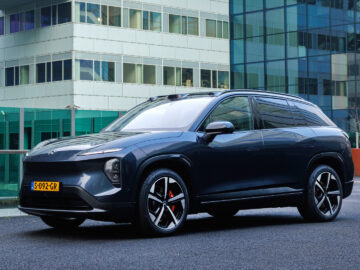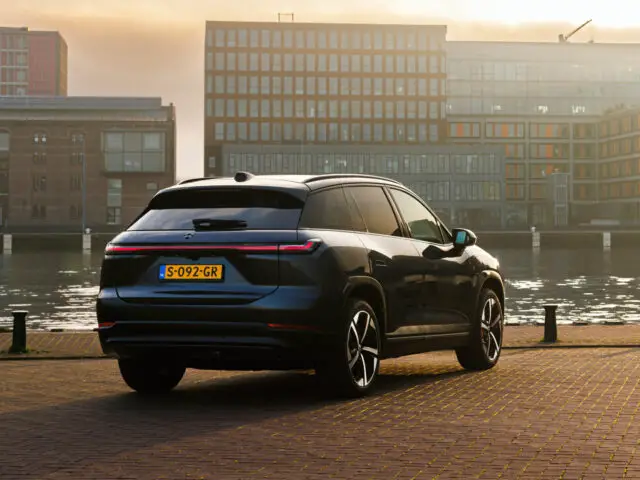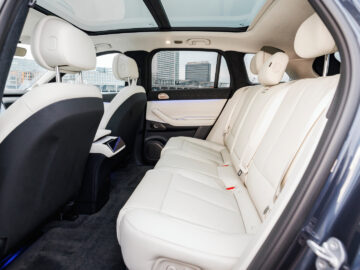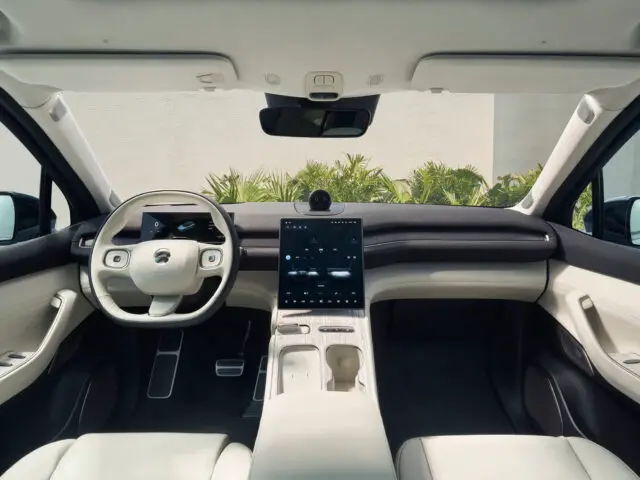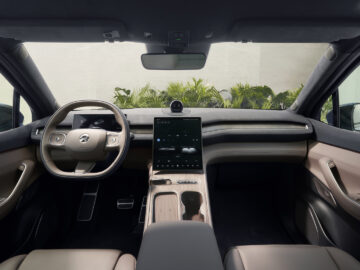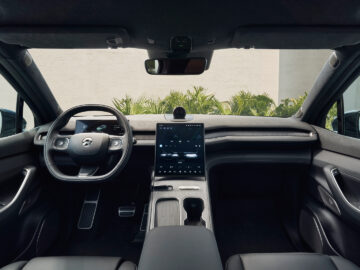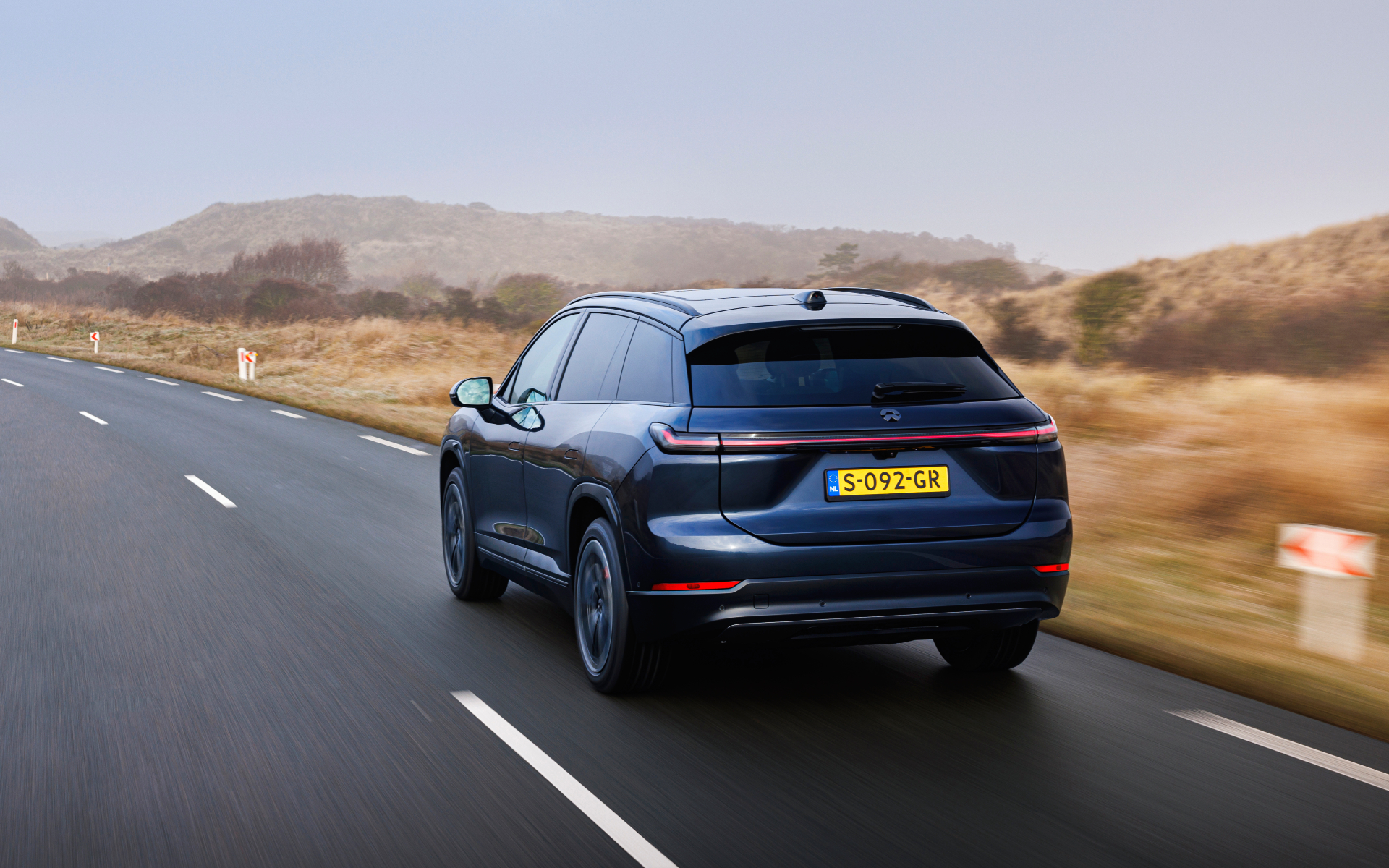NIO EL7 (2023) – Review – Potential success number?
No, we are not going on the track with this over 2,300 kilogram beast. There, despite its monstrous output of 652 hp and 850 Nm of torque, it is not really up to the task. First a step back: NIO introduced the ET7 in the Netherlands late last year. Some 60 units of that large electric sedan have been sold in the Netherlands to date. Not a huge amount, but then the ET7’s segment is not very popular in our country. Things are different with the EL7, as electric SUVs are selling like hot cakes. Therefore, it is also not inconceivable that the EL7 is going to cause a growth spurt in NIO’s sales.
NIO EL7 (2023) – Potential success number? – AutoRAI TV
Prefer to watch our video of the NIO EL7 before reading on? You can do so here:
Recognizable NIO
For a brand new in Europe, creating recognizability is perhaps the biggest challenge. NIO does tick off a number of contemporary design clichés with the EL7. Think two-layer LED headlights, a continuous LED bar as a taillight and a slightly sloping roofline. Still, NIO does manage to put its own face on the EL7. That includes the “double dash” LED daytime running lights, the “sharknose” and the lidar scanner above the windshield. Whereas until not very long ago the Chinese had elevated copying to a higher art, the NIO EL7 bears no resemblance to a European equivalent.
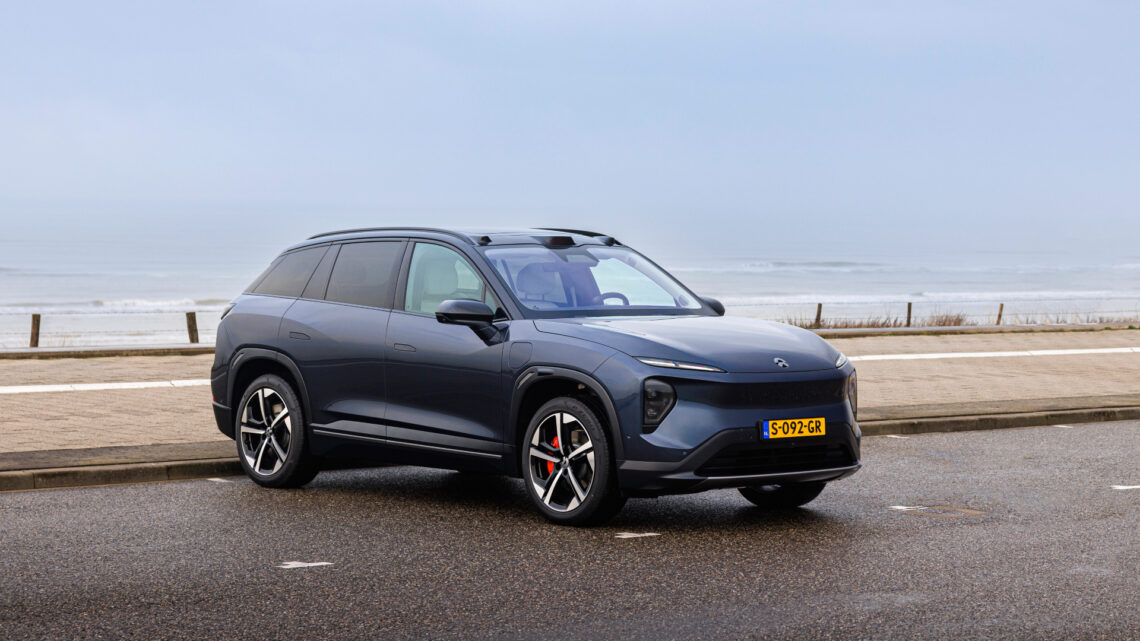
Never alone in the car
Inside the EL7 is tidy and lush at the same time. NIO uses synthetic leather, PU leather, but that material feels like Nappa leather. The dashboard and roof liner are finished in microfiber reminiscent of Alcantara. The whole thing feels pretty premium. Of physical buttons, they are not a big fan at NIO. Operation of by far most vehicle functions is via the large central touchscreen, right down to steering wheel and mirror adjustments. That touchscreen runs NIO’s own operating system. It works quickly, which is just as well, since the NIO EL7 does not support Apple CarPlay and Android Auto.
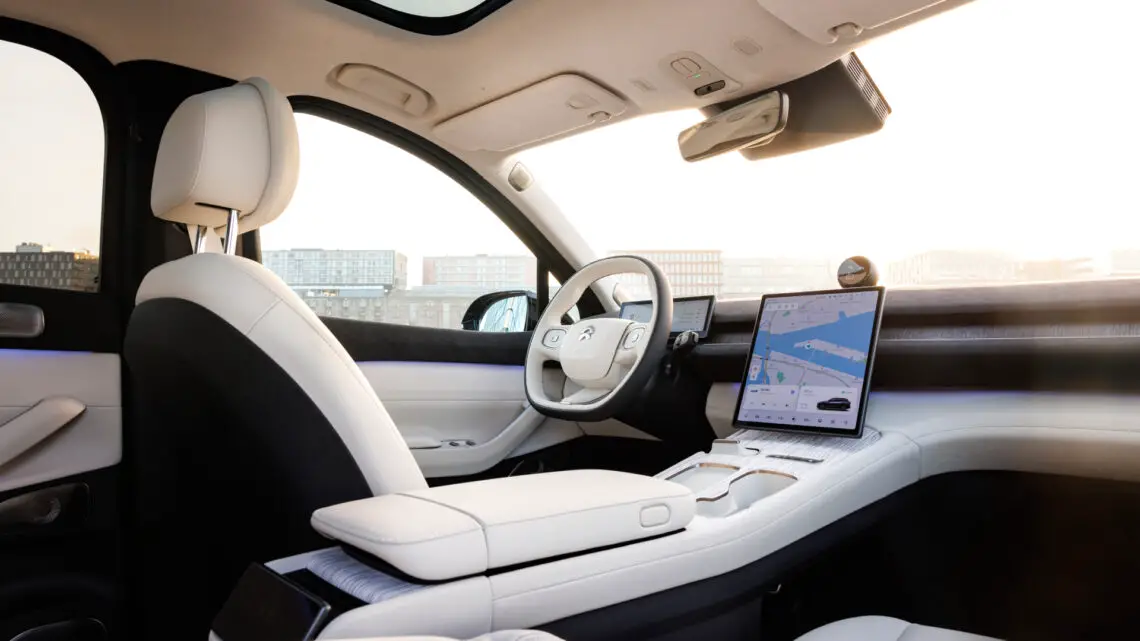
What else immediately stands out in the EL7’s interior is Nomi, the voice assistant that resides on top of the dashboard. A funny feature, although the black ball will also scare you at times. In our case, she roared “stay focused!” during the ride, all the while we just had our eyes on the road. We are not big fans of that meddling. For now, Nomi only accepts English commands; Dutch voice support is being worked on. Only then can we actually really test the system properly.
Room to spare in the NIO EL7
In terms of layout, the EL7’s front interior resembles that of the ET7. The biggest differences between the two models can be found behind the front seats. In fact, the EL7’s extra elevation gives you much more room in the back seat. Headroom is a lot better for it than in the sedan, and you can also fit your legs and feet just fine. Also, the luggage space is much more practical in the EL7. With the rear seats up you have 658 liters of luggage space if you include the compartment under the floor, with the bench flat – you can’t in the ET7 – you have 1,545 liters at your disposal.
If that space is still not enough to transport your gear, you can also hook a trailer of up to 2,000 pounds behind the NIO EL7 if you wish. That, in fact, is the maximum towing weight of the electric SUV.
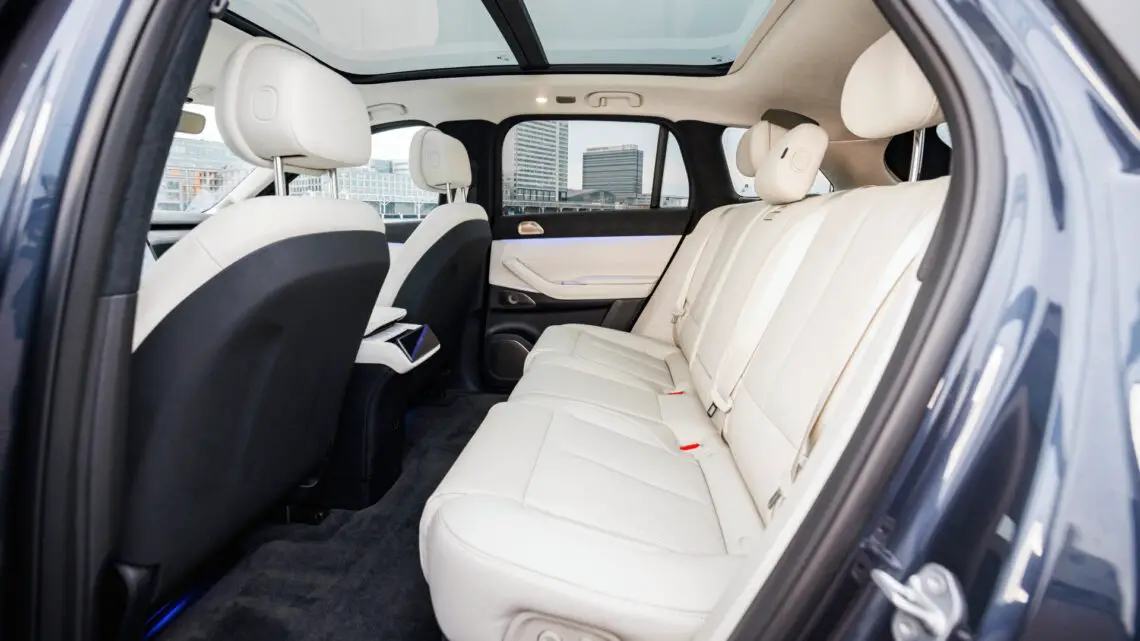
Driving characteristics NIO EL7
Plenty of space, a good finish, but what about the driving characteristics of the NIO EL7? Above all, NIO has made it a comfortable car. This is due in part to the air suspension all around, which is adjustable up to 90 mm in height, and the laminated glass. Consequently, the suspension comfort and silence in the NIO EL7 are incredibly good. We mentioned the power briefly in the introduction: 652 hp and 850 Nm of torque, distributed to all four wheels. With that electric muscle power, the EL7 accelerates to 100 km/h in 3.9 seconds if desired. The top speed is 200 km/h.
The only question is whether you really want to go that fast, since the EL7 mostly invites quiet cruising anyway. By the way, you can also use the infotainment system to determine how fast you want to sprint to 100 km/h, so you can dose the power a bit more fluidly. In terms of steering, the EL7 is rather unfeeling, but you can position the SUV well in the corners, and the air suspension also keeps tilting to a minimum. By the way, you do feel that you are traveling with over 2,300 kilograms of car. Of course, the EL7 is loaded with driving assistance systems that should, in theory, allow you to drive semi-autonomously, but in this test the driving time was too short to properly test that.
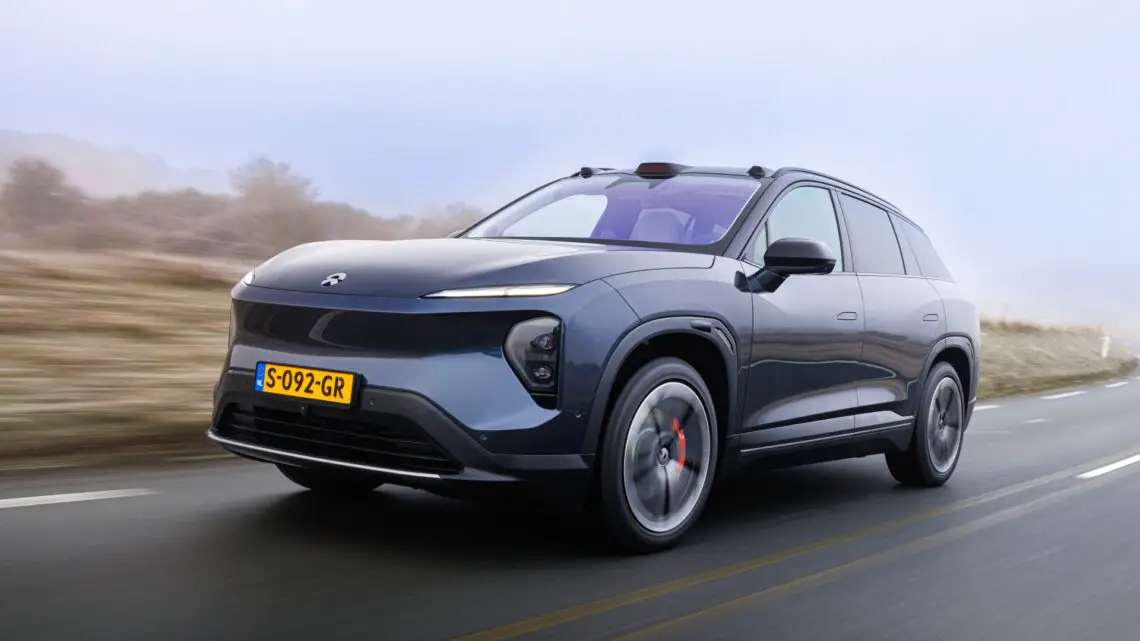
Battery swapping
Now we come to one of NIO’s real unique selling points: thebattery swap stations. In fact, you can get the EL7 with two battery packs: 75 kWh or 100 kWh. The nice thing, however, is that you don’t necessarily have to be attached to one. If you choose Battery as a Service (BaaS), you can swap your battery at one of the swap stations if you need more or just less range. Or you just opt for the same battery capacity and drive away with a full battery in five minutes. Whether this concept will catch on in the Netherlands is not yet clear, but at least in the current era, NIO is a pioneer in this field.
BaaS has another advantage, and that is that over the life of the car you benefit from any technical developments in the battery field. In fact, NIO always supplies the swap stations with the latest batteries, which means you can eventually get more advanced batteries in your car. NIO is also working on a battery with a capacity of as much as 150 kWh that will eventually come to swap stations. With this, a range of 700 kilometers should be within reach.

Range and prices NIO EL7
Currently, the NIO EL7 with 100 kWh battery gets from 479 to 509 kilometers, depending on the size of wheels underneath. With 75 kWh, the range dips below 400 kilometers (367 to 391 kilometers). If you buy the battery with the car, the NIO EL7 will cost 88,900 euros with 75 kWh and 97,900 euros with 100 kWh. The only drawback then is that you can’t use the swap stations. If you want it, the EL7 costs 76,900 euros and you pay a monthly fee for the battery. For 75 kWh you pay 169 euros per month, for 100 kWh the amount is 289 euros per month.
Options aside from paint color, wheels and interior color, NIO has no options. Thus, all equipment present is standard. So that means semi-autonomous driving systems, a panoramic roof, a 1,000-watt audio system, electrically adjustable seats and all the luxuries you see in the pictures. So in that light, the pricing of the NIO EL7 compared to its competitors is quite competitive.
Conclusion NIO EL7
To answer the question from the introduction, the ingredients for success are certainly present in the NIO EL7. The car is well finished, fast, luxurious and also has a competitive price. In addition, BaaS offers addition that is currently unique in the market. In short, chances are you will encounter the EL7 relatively often on the streets in the future.


